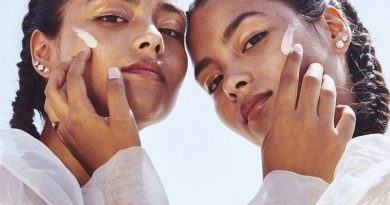Beauty & Wellness Briefing: What happened to the promise of SPACs?
Happy holidays, everyone! This week, I explore the trendy IPO path known as SPACs, including the ups and downs of some SPAC sponsors and the reasons behind the market’s lost interest. Scroll down to use Glossy+ Comments, giving the Glossy+ community the opportunity to join discussions around industry topics.
Over the past two years, one type of financial vehicle has dominated headlines, including the beauty industry’s: SPACs.
A SPAC, or special purpose acquisition company, allows a private company to go public without engaging in a traditional IPO roadshow. SPACs became popular in 2020 to bypass market volatility when the economy was stronger, but markets were in flux due to Covid-19. They were heralded as a new opportunity for brands to make a less expensive and time-consuming transition into the public markets, foregoing the traditional IPO roadshow. At the same time, they could continue to scoop up new investor money, unlike with direct listings.
According to SPAC Insider data, 2022 only saw 96 SPAC deals completed, compared to 2021 when there were 229, and 2020, meanwhile, saw 94 deals. The prior several years saw an average of approximately 30 deals each. This year served as the comeuppance and cool-down for SPACs, for several reasons. That included the sluggish economy and the revelation that several public companies borne from SPACs have underperformed. What’s more, interest rate increases made speculative betting less enticing for big investors, who could get higher returns from safer assets.
One of the first beauty and wellness companies to tap into SPACs during the boom of 2020 was Hims & Hers. Hims & Hers announced in Oct. 2020 that it would go public through a SPAC by merging with blank-check company Oaktree Acquisitions Corp. Andrew Dudum, CEO and co-founder of Hims & Hers, said the company was pursuing a traditional IPO path ahead of its SPAC merger, going so far as to build out the board of directors, the executive leadership team and the infrastructure to support a more traditional IPO process. But the time-saving value of a SPAC, coupled with what he called a “price appropriate” IPO price of $10, helped cement the SPAC choice.
“It was a process that felt more streamlined and capable of completion in six months, instead of 12-18 months [for a traditional IPO],” he said at the time. “I’m very protective of my management team’s time, because I’ve seen the value when they are ruthlessly focused on the company. When they’re distracted by external fundraising events, it’s a value loss.”
Other beauty companies followed Hims & Hers’ lead. The Beauty Health Company, owner of Hydrafacial, went public on the Nasdaq via SPAC in May 2021. Then Waldencast, in a three-way merger with Obagi and Milk Makeup, went public by SPAC in July 2022.
SPACs started to turn sour when economic inflation kicked in. For companies predicated on growth potential, as opposed to profitability, the option became less interesting since inflation would eat into the growth. Coupled with increased interest rates, it can be safer and more financially sound for investors to stock their cash in a savings account than play the field on SPAC speculation.
“The days of cheap capital are kind of gone for SPAC deals, at least for now. All of that elements have made these deals more difficult,” said Nick Clayton, a writer at SPACInsider.com. “The teams that don’t have the experience or other ties and connections to finance to raise more outside capital are really struggling to get deals done.”
Such was the case, most recently, with men’s grooming brand Manscaped and Bright Lights Acquisition Corp. They announced that their impending merger was canceled due to unfavorable market conditions in August. Previously, the deal was expected to give Manscaped about $305 million in proceeds and value the business at about $1 billion.
“Although we’re disappointed that current market conditions have made it unworkable to complete the merger with Manscaped, we are huge fans of the company and wish [founder and CEO] Paul [Tran] and the rest of the team continued success,” said Mike Mahan, CEO of Bright Lights, in a press release.
Additionally, since its formation in Jan. 2021, Powered Brands — slated to acquire a beauty, wellness and personal care company according to a previous Glossy story — has yet to announce a merger target after 23 months. The company is led by Katherine Power, founder of Merit and Clique Brands, and Dana Settle, founding partner at venture capital firm Greycroft. Powered Brands raised more than $1.5 billion in orders by the end of its first pricing day. According to the Financial Industry Regulatory Authority, a SPAC typically must complete an acquisition within 18-24 months and must use at least 80% of its net assets for any such acquisition. If it fails to do so by January 12, 2023 — according to its 10-Q SEC filing — then it must dissolve. Greycroft declined to comment, and Power did not respond to a request for comment.
By year-end, almost $45 billion worth of special purpose acquisition companies will have been liquidated, according to SPAC Insider data. Another 450 SPACs are still looking for partners.
While some SPACs are giving up on finding deals, some have modified their targets. In Oct. 2020, Empower SPAC, held by MidOcean Partners V, was targeting consumer companies with an enterprise value of at least $750 million. It was led by retail industry veteran Matt Rubel, former CEO of Varsity Brands, Collective Brands and Cole Haan. MidOcean Partners V counted other industry veterans, like Matthew Shay from the National Retail Federation, Mindy Grossman from WW, and Kandy Anad from Molson Coors, Unilever and The Coca-Cola Company, among its team. In March 2021, Empower SPAC appeared to merge with aftermarket auto parts manufacturer Holley, valuing the company at $1.55 billion. Though Holley, as an aftermarket company, operates in the consumer space, it is a departure from the usual consumer brand one could reasonably expect. Matt Rubel declined to comment, and MidOcean Partners V did not respond to a request for comment.
“The SPAC market is very frothy and, I would argue, saturated in some ways,” said Michel Brousset, co-founder and CEO of Waldencast, during a Beauty Independent webinar in March 2021. He said that a Waldencast investor described three types of SPACs. The first is the traditional kind, put together by experienced deal makers. Then there are the operationally-efficient ones, with specific subject matter expertise and whose executives plan to stay with a company post-merger for many years. But the majority of SPACs are led by opportunists who focus on making a profit by arbitrage between the transaction and what’s called a promote. SPAC sponsors compensate themselves with a “promote,” with shares equal to 25% of the SPAC’s IPO proceeds or, equivalently, 20% of post-IPO equity.
“In our case, we’re not only operators, but [also] the incentive of the promote is not significant to us. The incentive is putting $160 million to work and [seeing] the years’ exponential growth that will be created,” he said. “You have to be unique. You have to be different. And, you have to add concrete value, because these arbitrage opportunities are not too sustainable.”
Even so, zooming in on the performance of SPAC companies now trading publicly, called D-SPACS, shows that beauty brands are an exception, when compared to other D-SPACs. It’s similar to the ongoing resiliency of beauty companies in the public markets when times are tough.
At the time of this reporting, Waldencast stock sat at $9.01, a decline of 8.9% from its IPO price of $9.85. Hims & Hers stock price was $6.47, a decline of 40.9% from its IPO of $9.80. And Beauty Health Company was at $8.98, a decline of 12.8% from its IPO of $10.21. That may seem like poor stock performance, but compared to the S&P 500, which have declined 20% year-to-date, those companies have mostly bucked the trend. And the 56 companies that went through a traditional IPO in 2022 are down 45.6% collectively, said Clayton.
“The conversation on the outside is, ‘Look at how terrible SPACs are doing; the house is on fire.’ But from the inside, the teams that have been doing this for many years are not too worried about it,” said Clayton. “The wider market goes through cycles, and it gets harder and easier at different times.”
And SPACs in the beauty space aren’t dead by any means. AR software company Perfect Corp., popular among beauty brands, went public via SPAC in October.
Inside our stories:
Body care will dominate 2023.
Ulta Beauty spotlights services in new merchandising strategy.
Revlon forms a path out of bankruptcy.
What we’re reading:
Thirteen Lune’s mission to make beauty inclusive.
New regulations are coming for the beauty industry.
TikTok is rife with awful beauty trends.





